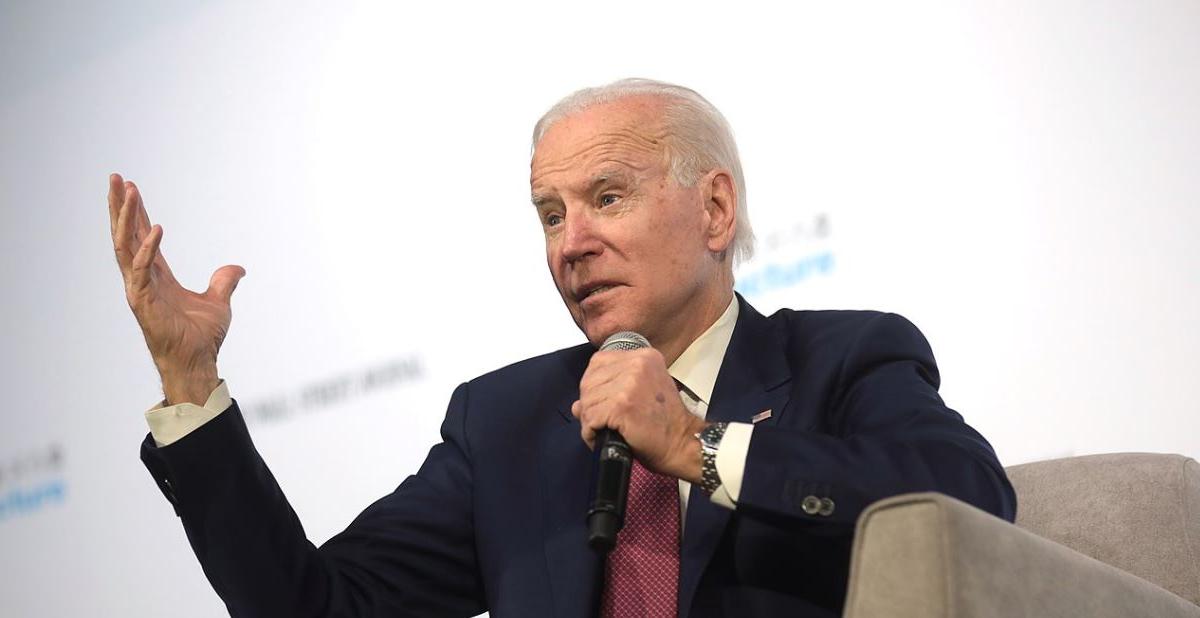
On 60 Minutes last Sunday, President Biden declared “the pandemic is over,” but quickly added “we still have a problem with COVID, we’re still doing a lot of work on it.”
Biden then reiterated: “But the pandemic is over” and his evidence was the fact “no one’s wearing masks. Everyone seems to be in pretty good shape. And so I think it’s changing, and I think this is a perfect example of it.”
Biden’s prevaricating position that “it’s over” but “we still have a problem” is exactly what we’ve come to expect from the regime when it comes to covid. After all, the Biden administration still enthusiastically supports the Pentagon’s vaccine mandates and in the federal courts the administration continues to push for a variety of federal mandates including air-travel mask mandates and various federal education programs such as Head Start. The feds still want forced vaccines for federal contractors. Travel to the United States still requires proof of vaccination.
In other words, the administration certainly isn’t acting like the “pandemic is over” in terms of actual policy. Moreover, the administration is contradicting the experts on which it relied so heavily to back up the regime’s beloved Covid Panic that was used to seize unprecedented powers for politicians throughout 2020 and 2021.
For example, as Fortune‘s Erin Prater showed this week, the usual guardians of covid “science” are hardly in agreement with Biden that the pandemic is over. Michael Osterholm at the Center for Infectious disease Research says it too soon to tell if the pandemic is over. Biden’s comments were “not well thought through,” Osterholm says. Meanwhile, Georges Benjamin of the American Public Health Association says that the president “clearly misspoke” and “we need to be really clear that the pandemic is not over.”
At least these people are being consistent. According to the CDC’s own statistics, more than 300 people have died of covid per day in recent weeks, and “community transmission” is still listed as high in most of the US. Daily new cases are still where they were throughout much of 2020 and 2021.
But it’s not hard to see why the administration has suddenly forgotten about all the alleged science that policymakers repeatedly flogged to demand support for countless state and federal mandates for forced vaccines, lockdowns, and business closures. The regime’s current ruling coalition, the Democratic party, is afraid of losing big time in the November elections, so it also wants to tell people about how wonderful everything is. If there were not an election two months from now, it’s safe bet we’d instead be hearing all about how terrible the pandemic is.
But, there is an election, and that means Biden has to be out there talking about how the pandemic is no big deal, that everyone should stop complaining about inflation, and that things are fine.
Most Ordinary Americans Declared the Pandemic Over Many Months Ago
Winning elections, however, requires at least somewhat aligning the party’s public positions with existing public opinion in the lead up to election day.
And that’s exactly what Biden is doing. There aren’t enough committed freak-out-about-covid ideologues left to assure the party of victory. Only in certain left-leaning strongholds does a sizable portion of the voting public actually regard “the pandemic” as a priority. Yes, one will continue to encounter many true believers in the Bay Area, or in New York City, or in Martha’s Vineyard. And, naturally, this attitude prevails in countless University towns across the nation, where, amazingly, university pencil pushers are still enforcing vaccine mandates. Pandemic panic also remains popular among corporate elites whose primary concern in 2022 is apparently all about being loyal soldiers for the regime.
In most of the real world, however, which includes at least half the American voting public, people have long since moved beyond this. Virtually no one is wearing masks anymore, isolating in case of “possible exposure,” or lining up to get the next booster. That sort of thing may seem normal in California or at City Hall in Chicago, but few ordinary people are listening to the usual harangues offered up by health bureaucrats anymore.
More importantly, it’s extremely unlikely that were Biden to go on television and announce that “the pandemic is really bad now, guys!” that many people would listen.
Pandemics End When the Public Says They Do
So, we’re now seeing the pandemic end exactly the way we expected it to. According to the government-funded hive of health researchers, the pandemic is still not over, and they’re still saying “not so fast!” But in, practice, the pandemic is over because people believe it is over.
Back in 2020, we here at Mises.org published a column called “Pandemics Are Over When the Public Decides They’re Over,” exploring this phenomenon of the disconnect between the “official” pandemic, and the pandemic in practice. The conclusion was exactly what the title suggests. If the public is finished going along with the regime’s “pandemic measures,” the pandemic is functionally over. As The New York Times explained in May 2020:
pandemics typically have two types of endings: the medical, which occurs when the incidence and death rates plummet, and the social, when the epidemic of fear about the disease wanes.
“When people ask, ‘When will this end?,’ they are asking about the social ending,” said Dr[.] Jeremy Greene, a historian of medicine at Johns Hopkins. In other words, an end can occur not because a disease has been vanquished but because people grow tired of panic mode and learn to live with a disease
Or, as Scientific American put it in March of this year:
“Every time people walk into stores without masks or even just walk into stores for pleasure, they’re indicating they think the pandemic is winding down, if not over,” [historian of pandemics Marion] Dorsey says. Whether or not there is an official declaration of some kind, “I don’t think anything really has a meaning until, as a society…, we act as if it is.”
Author and historian John M. Barry, who wrote one of the most definitive chronicles of the 1918 pandemic—The Great Influenza: The Story of the Deadliest Pandemic in History—has come to a similar conclusion. A pandemic ends “when people stop paying attention to it,” he says.
Not even the “medical” end of a pandemic is as simple as it seems, however. Given that covid is unlikely to disappear, the question remains as to whether or not infections and deaths are at “stable” rates, or whether herd immunity has been reached. Either would suggest an end to a pandemic, but it’s not straightforward. As noted at mises.org by Dr. Michel Accad:
while herd immunity may indeed be a real phenomenon that can take place under certain circumstances when populations are subjected to a contagious disease, it is important to recognize that herd immunity is not a concept that has any practical value for setting public health policy.
For one thing, there is no objective way to establish that herd immunity has been achieved, since a “stable” rate of new infection is a subjective notion. What is a stable or tolerable rate of infection for me may not be so for you.
True believers in lockdowns and forced vaccines will likely continue to debate under what conditions people can be “permitted” to live their lives without intervention from health experts. But the fact is the pandemic has long been over everywhere in America except in enclaves favorable to the authoritarian Left.
Biden’s statement on Sunday—no doubt driven by political exigencies—that the pandemic is over, is simply a recognition of where most Americans are already. They’ve moved on. They are aware of the risks and they simply don’t agree with the well-heeled health experts who continue to live in their government-funded bubbles. Reality reasserted itself, at least in this small respect, and Biden and his allies have been forced to admit it.
[Read More: “Why They Want to Keep the “Health Emergency” Going Forever” by Ryan McMaken]



